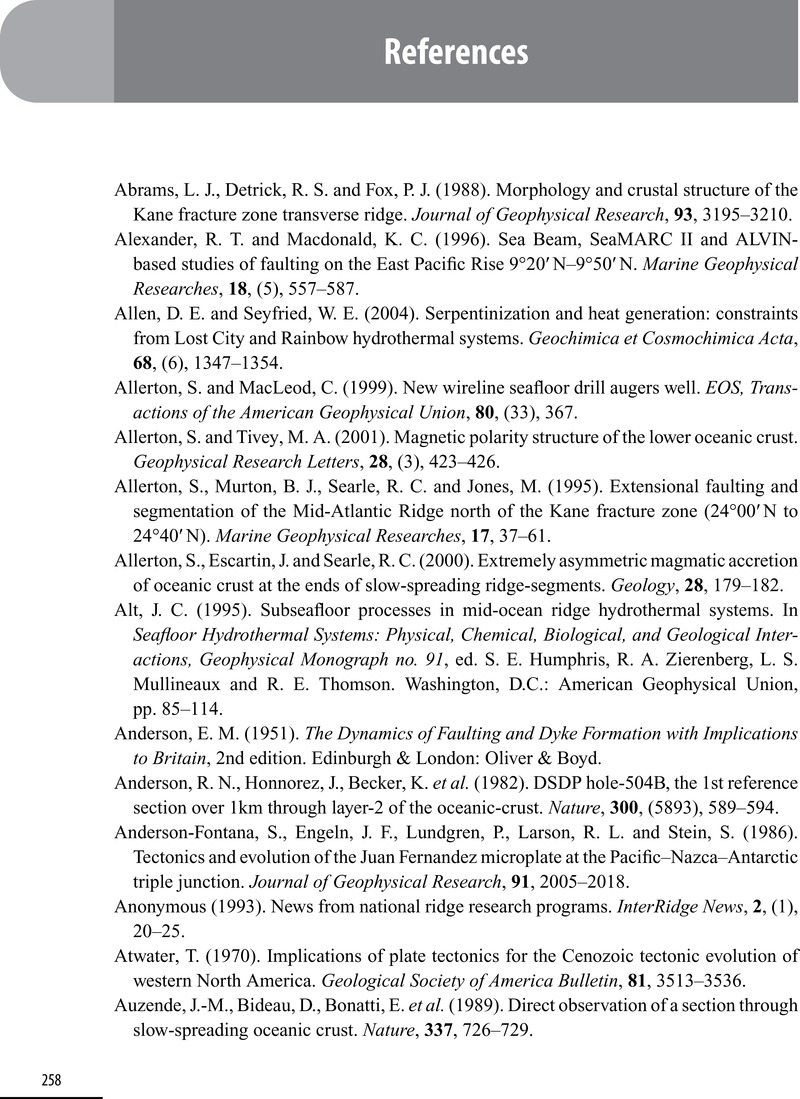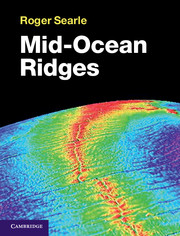Book contents
- Frontmatter
- Dedication
- Contents
- Preface
- 1 Introduction
- 2 Techniques of MOR study: a brief historical review
- 3 The oceanic lithosphere
- 4 Ridges as plate boundaries
- 5 Crustal structure and composition
- 6 Volcanism
- 7 Tectonism
- 8 Hydrothermal processes
- 9 Summary and synthesis
- Appendix A Glossary of terms
- Appendix B Directory of named features
- References
- Index
- Plate Section
- References
References
Published online by Cambridge University Press: 05 June 2014
- Frontmatter
- Dedication
- Contents
- Preface
- 1 Introduction
- 2 Techniques of MOR study: a brief historical review
- 3 The oceanic lithosphere
- 4 Ridges as plate boundaries
- 5 Crustal structure and composition
- 6 Volcanism
- 7 Tectonism
- 8 Hydrothermal processes
- 9 Summary and synthesis
- Appendix A Glossary of terms
- Appendix B Directory of named features
- References
- Index
- Plate Section
- References
Summary

- Type
- Chapter
- Information
- Mid-Ocean Ridges , pp. 258 - 308Publisher: Cambridge University PressPrint publication year: 2013



